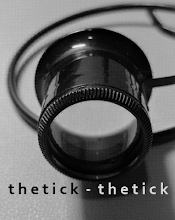Japanese made quartz. Swiss made quartz. They are two horological (technology used in watch-making) world that thought me different story. Simple maintenance lessons like replacement of the watch battery, the quartz movement, and the most important one is the value. The watch value! Yeah, I can still remember the counter staff at Cash Converter told me about the mechanical watch.
My First Mechanical Watch
I am just ordinary person and I earn average income. I do not have plenty of cash to splash on my hobby. So, I decided to buy a mechanical watch, a Japanese mechanical should be affordable. Where to buy? I went to a watch shop (Rainbow Watch) in Ampang Park Shopping Complex. It is a watch shop where I get to know a humble watch repairer named Mr. Lee. He does sales too! The shop where he work does not sell Swiss made watches. Firstly, upon my arrival to the shop I test him on the plenty Japanese mechanical watches on display - Seiko, Citizen, and Orient. “Boss, which one do you recommend? Price, we can ‘kawtim’ later”. “Seiko laaa… Seiko got the best engine ma. Get the automatic, no need battery. As long as you move your hand haa… the engine moves. So no need to use battery”, he answered me. “Ooo… how long will the time-keeping last?” I asked him again. “Japanese watch like Seiko automatic if you wear one day, the next day without wearing, put on your desk, it still runs. Last for one or two days and if you wear again it runs continuously. If the watch die (stop), you just shake it then it will move again”. He is making technical sales!!!
“Ok, let me choose”, I revered back to his suggestion. Browsing through the glass display, I spotted a watch looks sporty, sturdy, with steel bracelet – an automatic Seiko diver’s watch. I guess this is going to be my first mechy! An automatic, 21 jewels, day-date, and water resistant watch. We manage to settle the sales with good discount, cash payment. After dismantling and adjusting the steel bracelet to fit my wrist, the sales assistant packs everything into a box. No way, I take out the watch from the box, wear it straight away. It’s a new watch, live with it soonest as you pay - impatient! Get to know your new goodie.
Being inquisitive, I ask Mr. Lee again. “This watch is using what engine ha Mr. Lee?” May be because he is happy with my purchase, he gave me an answer with long elaboration. The watch is using the Seiko 7S26 automatic movement. According to him, it is one of the most stable watch movement produced by Seiko and it has been a preferred movement to power wide range of Seiko automatic watches, especially the famous Seiko 5. Actually he is right and honest about it. Through Internet surfing I found that the 7S26 have good rating among Japanese mechanical watch enthusiasts.
My first 'mechy'. A Seiko diver model SKX031K with 7S26A movement.
Automatic, Self-winding, Hand-winding, Manual-winding
Ever since I bought the Seiko automatic diver, I started exploring the mechanical timepieces. I browse through the Internet and I spotted a few terminologies being used and they confused me! The mechanical movement description: automatic and self-winding. And then, I found another two – hand-winding and manual-winding. What are these terminologies referring to? In one of the article, I read about the basic watch mechanics. Not like quartz that uses the battery, ‘winding of the movement barrel’ is the basic principle to power a mechanical watch. Automatic or self-winding means when the watch strapped on our wrist and as and when our hand moves, the watch will wind by itself. The power to wind comes from a ‘rotor’ integrated with the movement. We can force the winding by shaking the watch! Hand-winding watch do not have rotor. The barrel is winded by winding the ‘crown’ of the watch. (In Malay: jam kunci, nak hidupkan jam ni kena kunci pengunci jam., May be because we have to wind the crown ourselves – using our hand, so the horologist called it hand-winding. Hence, we do it manually so the terms manual-winding is used.
The Seiko 7S26 automatic movement. The top quarter plate is what called rotor.
My quest continues. I am thinking about Swiss mechanical... tick, tick, tick!









